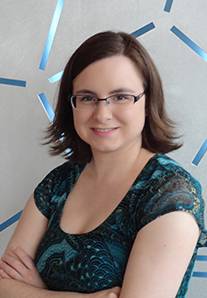Dr. Cynthia Luxford
Associate Professor
|
Contact Information Office: CHEM 212 Phone: (512) 245-1290 Fax: (512) 245-2374 email: c_l268@txstate.edu |
Educational Background
|
Honors and Awards
|
|
Areas of InterestChemistry Education |
|
|
Related Web Sites |
Research in the Luxford Group
The overarching goal of our research group is to determine how we can make chemistry more accessible for all students. One way to improve the accessibility of chemistry, is to find ways to measure how well people understand the fundamental underlying chemistry concepts. Across the Chemistry Education Research community, researchers have been building concept inventories that are designed to measure students’ conceptual understanding. While these tools are being developed, it is still unclear how, and if, the tools are being used in chemistry classrooms. One example of a concept inventory is the Bonding Representations Inventory (BRI). The BRI was developed and designed to measure both high school and general chemistry students’ understanding of covalent and ionic bonding as depicted through representations (Luxford & Bretz, 2014). While we know the BRI is being used in many different types of classrooms and across several countries, we do not yet know how the use of the BRI is impacting or changing how teachers teach. We are currently exploring various ways middle school, high school chemistry, and general chemistry instructors assess their students’ conceptual understanding.
Another way we can make chemistry more accessible is to develop new classroom activities that will give students more authentic research experiences. Over the last couple years, middle school and high school teachers have been developing Project Based Learning (PBL) units during 1 week summer workshops through the Partnerships for Research and Education in Materials (PREM) Academy to teach content through student centered exploration. Researchers in our group are currently focusing on the effectiveness of PBL activities at engaging students while also teaching the content that was traditionally taught through lecture.
A third area of interest for our research group is determining how students solve chemistry problems. With the advancement of technology and the development of eye-tracking technology, we can follow students’ eyes as they solve various types of chemistry problems. Through retroactive think aloud procedures, our group is focusing on determining the differences between pathways successful students and unsuccessful students make as they solve chemistry problems.
Recent Publications
Holme, T.A.; Luxford, C.J.; Brandriet, A. “Defining Conceptual Understanding in General Chemistry,” J. Chem. Educ., in press (ACS Editors Choice Article).
Holme, T.; Luxford, C.; Murphy, K. “Updating the General Chemistry Anchoring Concepts Content Map,” J. Chem. Educ., 2015, 92(6), 1115–1116. Link to Article
Luxford, C.J.; Holme, T.A. “What do conceptual holes in assessment say about the topics we teach?” J. Chem. Educ., 2015, 92(6), 993–1002. Link to Article
Luxford, C.J.; Linenberger, K.J.; Raker, J.R.; Baluyut, J.Y.; Reed, J.J.; De Silva, C.; Holme, T.A. “Building a Historical Database Using ACS General Chemistry Exams as Artifacts.,” J. Chem. Educ., 2015, 92(2), 230–236. Link to Article
Luxford, C.J.; Bretz, S.L. “Development of the Bonding Representations Inventory to Identify Student Misconceptions about Covalent and Ionic Bonding Representations,” J. Chem. Educ., 2014, 91(3), 312–320 (ACS Editors Choice Article). Link to Article
Luxford, C.J.; Bretz, S.L. “Moving beyond definitions: What student-generated models reveal about their understanding of covalent bonding and ionic bonding,” Chem. Educ, Res. Pract., 2013, 14, 214–222. Link to Article
Luxford, C.J.; Crowder, M.W.; Bretz, S.L. “Creating an inorganic symmetry POGIL activity,” Chem. Educ., 2012, 89(2), 211–214. Link to Article
Herrington, D.G.; Yezierski, E.J.; Luxford, K.M.; Luxford, C.J. “Target inquiry: Changing chemistry high school teachers’ beliefs about inquiry instruction and their classroom practice,” Chem. Educ. Res. Pract., 2011, 12, 74–84. Link to Article

